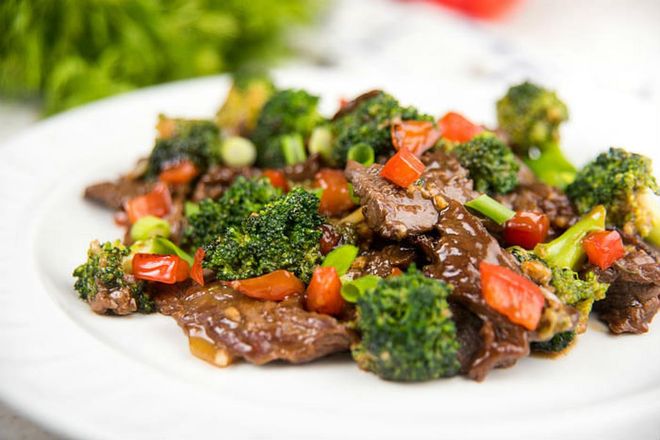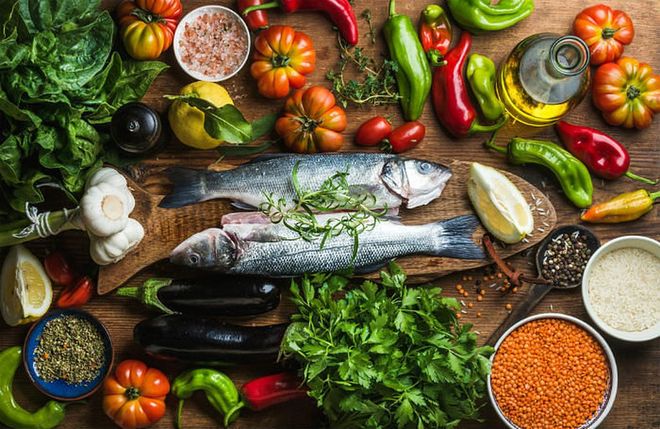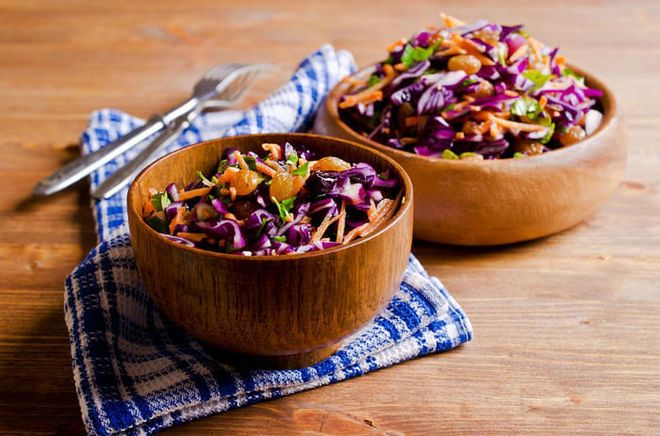The Lowdown On Fad Diets: Atkins, Ketogenic, Paleolithic And More
Fad diets get a bad rep for being extreme and unsustainable because they encourage rapid weight loss. But is there truth in that?


Photo: Getty
Fad Diets
Fad diets are diets that are popular for a time, and are often seen as a quick fix for those trying to shed kilos in a matter of weeks. They tend to promise rapid weight loss or health benefits, such as detoxification, without us having to put in too much effort. Low-carb, high-protein, paleolithic, macrobiotic, Mediterranean, ketogenic and more – do they actually work?
The truth is, some of them are nutritionally insufficient or imbalanced and therefore unsustainable in the long run. But the good news is, some of these fad diets do work – some of them don’t involve cutting out food groups entirely, only an adjustment to the ratio of those food groups, thus helping us lose weight without compromising on the nutrients we need.
Here’s the lowdown on several popular fad diets, and our take on whether these diets can be healthy, well-balanced and sustainable.
(Note: To choose a diet that’s right for you, do remember to first speak to your doctor about any health conditions you might have, or medications you’re taking.)
1. Atkins Diet

Photo: Shutterstock
Atkins Diet
Arguably one of the most popular and famous one, the Atkins diet, which was developed by cardiologist Robert C. Atkins in the early 1970s, aims to get the body to burn fat instead of carbs (in a process called ketosis) by reducing your intake of carbohydrates and replacing it with high-protein, high-fat foods.
It focuses on proteins and fats such as meat, poultry, seafood, eggs, oils, cheese, and butter while promoting cutting out starchy and sugary refined carbs such as bread, potatoes, pasta, chips, cookies and candy. The first part of the diet is eating fat, protein, and only 20 grams of carbs in the form of vegetables. Phase two sees an increase in carb allotment to between 25 and 50g and progressing to other foods such as fruits, beans and legumes, whole grains and cottage cheese, and finally you up carb intake further to between 50 and 80g as you figure out that optimal amount of carbs you can consume while still losing weight.
The newer, revised Atkins 40 is a response to the criticism the Atkins 20 had received for placing no restrictions on the amount of fats and proteins one consumes. The Atkins 40 now emphasises portion control and has more relaxed rules (for instance, starting out with 40g of carbs in your daily diet) without cutting out any food groups like the Atkins 20 did.
There are still limits to the amount of butter or fat to consume, but less strict rules for meat and other proteins.
Pros: There’s no calorie-counting involved or going out of your way to buy special foods or preparing them a certain way.
Cons: You have to track the amount of carbs you take in. Also, cutting out carbs can take some getting used to, and you may find your energy level dropping at the start. Other effects may include dizziness and fatigue.
Does it work: Cutting out complex carbs under the Atkins 20 is not the healthiest as you are depriving your body of essential nutrients such as vitamin B12 and folic acid at the expense of weight loss.
Related article: Can A Vegetarian Diet Affect Fertility And Pregnancy?
2. Ketogenic Diet

Photo: Shutterstock
Ketogenic Diet
The keto diet became popular as a therapy for epilepsy in children in the 1920s and 30s. It focuses on making ketones – instead of sugar – as the primary energy source, thus putting your body in a metabolic state of ketosis. (Ketones are compounds made of fatty acids, which your body burns for energy.)
Like the Atkins diet, the keto diet involves foods such as meat, seafood, above-ground vegetables (which means no potatoes or other tubers), nuts and seeds, oils, eggs and some dairy products such as (plain) Greek yoghurt and cheese.
But unlike the Atkins diet, the keto diet doesn’t gradually increase your carb intake. Instead, it keeps the carb intake consistently low so that you remain in a constant state of ketosis. It typically allows less than a total of 50 grams of carbs per day, often even less than 30 grams.
Pros: Same as Atkins diet
Cons: Same as Atkins diet
Does it work: One common criticism of this diet is that a lot of people tend to eat too little fruits and vegetables and too much protein and fats from processed foods, but studies have shown that the keto diet can improve blood sugar control in the short term. All in all, the keto diet may help with weight loss in the short term but can be unsustainable in the long run, nutritionally speaking.
3. Paleolithic Diet

Photo: Shutterstock
Paleolithic Diet
The paleo diet was derived from the diet of hunter-gatherers during, well, the paleolithic era – hence its other name: the “caveman diet”.
It was started around the 1970s by gastroenterologist Walter Voegtlin, but was popularised by Loren Cordain in his 2002 book The Paleo Diet. It allows only the foods that humans ate half a million years ago; that is, lean meats, fish, fruits and non-starchy vegetables, and nuts. Starchy vegetables (sorry, potato-lovers, you’re out of luck again), grains, dairy, and processed foods are out.
The paleo diet has gained a loyal following because it emphasises nutrient-rich produce and physical activity, which are the keys to not just weight loss but a healthy lifestyle in general.
However, the diet is classified as a fad diet because it can be hard to maintain and excludes several food groups such as grains, dairy and legumes. However, there are still health benefits to the diet as it eliminates processed foods and encourages the consumption of a variety of plant and animal foods.
Pros: The paleo diet focuses on whole, unprocessed foods, which are ideal any healthy diet.
Cons: Eliminating whole grains, dairy and legumes may lead to some nutrient deficiencies.
Does it work: Yes. Studies have shown that because the paleo diet includes monounsaturated fats (in the form of nuts and fatty fish) and excludes saturated fats, it also reduces blood triglyceride (i.e fat) levels and visceral fat, a particularly dangerous type of fat found in the abdomen and liver that encourages insulin resistance and increases the risk of diabetes and heart disease.
Related article: Eight Food Label Terms That Don't Mean A Thing (But Raise Prices)
4. Zone Diet

Photo: Shutterstock
Zone Diet
Created by biochemist Dr Barry Sears in the mid-90s, the Zone diet is considered a fad diet because it promotes weight loss and overall health by following a strict ratio of carbs, fat, and protein.
The diet dictates that our calorie intake should comprise 40 per cent high-fibre carbs, 30 per cent lean protein, and 30 per cent healthy fat. It aims to reduce blood sugar, inflammation and insulin resistance, which all in turn encourage weight loss.
Furthermore, the Zone diet helps to reduce fatigue with low-GI, high-fibre whole grains, which provide a gradual release of sugar into the blood, keeping your blood sugar levels constant and keeping you full longer. It also reduces body fat by increases the ratio of anti-inflammatory unsaturated omega-3 to omega-6 fatty acids.
Pros: You hardly need to restrict or exclude any food groups — except, of course, you’ll need to give up processed meats and refined sugars, the usual culprits of health problems.
Cons: None, unless you hate the hassle of having to measure an exact 4:3:3 ratio for every meal.
Does it work: Yes. The Zone Diet has been proven to be effective for weight loss without having to eliminate any food groups from one’s diet, ensuring an intake of essential nutrients and making it a sustainable diet for the long term.
5. Mediterranean Diet

Photo: Shutterstock
Mediterranean Diet
Probably the most sustainable and healthy diet of all fad diets (really, this shouldn’t be a fad diet at all but a regular diet), the Mediterranean diet includes all the necessary nutrients such as heart-healthy fats and fish, and excludes the unnecessary, unhealthy stuff such as red meat and refined carbs. Plus, you get to enjoy that glass of red wine.
This heart-friendly diet consists primarily of food from the Mediterranean countries such as Greece and Italy: Plant-based ones such as fruits and vegetables, whole grains, nuts and legumes, as well as healthy fats such as olive oil and canola oil (instead of butter), and herbs and spices for seasoning (instead of salt). Red meat should be eaten no more than a few times each month, but fish and seafood can be eaten twice a week, along with moderate amounts of poultry, eggs, and dairy.
The Mediterranean diet emphasises unsaturated fats and omega-3 fatty acids found in fish, nuts and seeds, and olive oil, and allows you to have red wine in moderation. Plus, Jennifer Aniston has been on this diet for decades, which goes to show how sustainable and effective it is.
Pros: You don’t have to cut out food groups, measure your food proportions, and your meals are just as tasty.
Cons: None.
Does it work: Certainly. The Mediterranean diet is well-balanced and full of heart-healthy foods that help to maintain low cholesterol and triglyceride levels.
Related article: 10 Best Places In Singapore For Gluten-Free Food Options
6. Macrobiotic diet

Photo: Shutterstock
Macrobiotic diet
Several years ago, the macrobiotic diet was one of the most popular diets. Developed in the 1920s by a Japanese philosopher called George Ohsawa who believed that by eating a simple, healthy diet, we could live in harmony with nature, it is basically a pescetarian diet that aims to balance the yin and yang elements of food.
The macrobiotic diet primarily consists of organically grown whole grains, beans, fruits and vegetables. The optimal breakdown is 60 per cent whole grains, 30 per cent vegetables, and 10 per cent tofu, beans, or sea vegetables such as kelp or seaweed. Fruits, nuts, and fresh seafood can be consumed one to three times weekly.
Foods to exclude include dairy and eggs, meat, sugar and processed foods, and anything spicy. Alcohol, coffee, soda, and fruit juice that come out of a carton are no-no’s as well.
The diet also encourages slowing down your lifestyle and regular meditation, resulting in more mindfulness and moderation when eating. Chewing your food well and taking your time to eat also aid in digestion and helps you realise when you are full, so you won’t overeat. (Fun fact – Gwyneth Paltrow and Madonna are proponents of this diet.)
Pros: It is very heart-healthy because they are low in saturated or animal fats but high in fiber.
Cons: It may lack the nutrients we typically derive from dairy and meat.
Does it work: Yes. Aside from advocating mindful eating, the macrobiotic diet is mostly vegetarian and limits animal fat as well, which is effective for weight loss (due to reduced saturated fat) and preventing heart disease and high cholesterol.